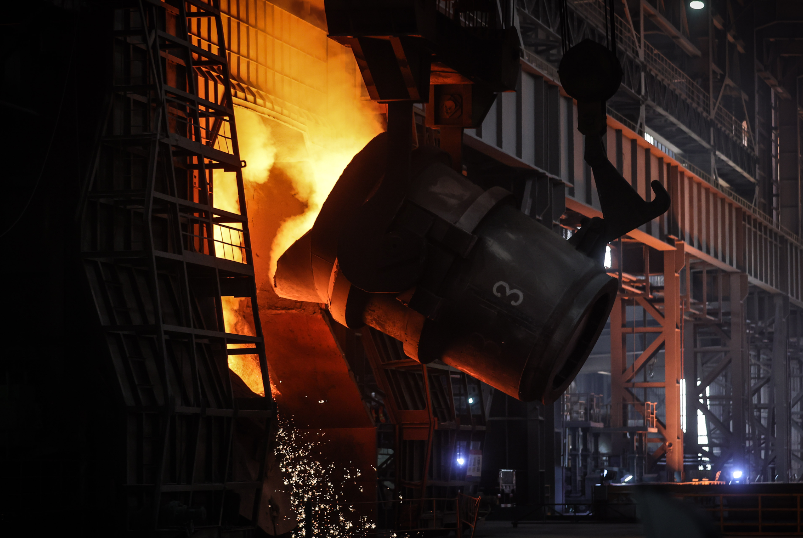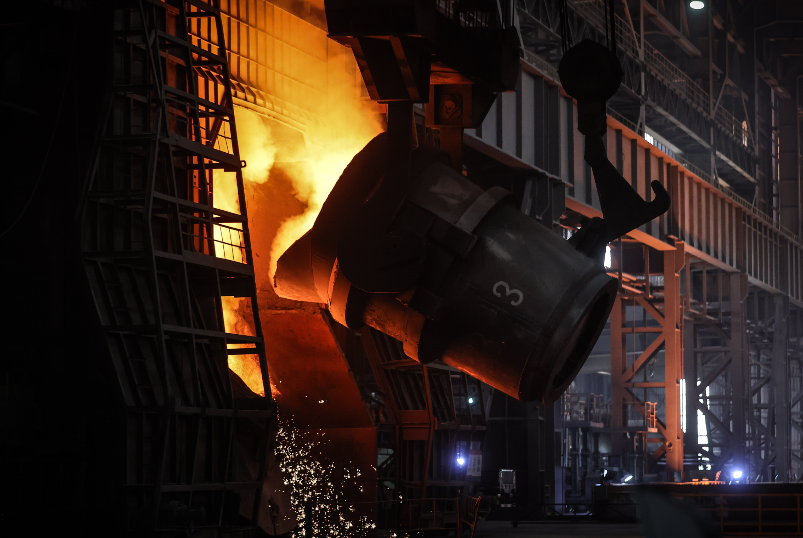
Photo shows a steel production workshop in Ansteel, a large steel enterprise in China.
BEIJING, May 10 (Xinhua) -- China has recently seen a sharp rise in steel prices, which many industry insiders attribute to the robust demand from downstream sectors and the domestic capacity cuts for environmental protection.
-- Sharp rise in steel prices
After the five-day May Day holiday, the domestic steel prices have been rising rapidly.
Prices of the rebar in regions of western China stood at 5,146 yuan/metric ton (tonne) at the end of April, an increase of nearly 400 yuan/tonne from 4,751 yuan/tonne at the end of March, according to the China Steel Price Index (CSPI) report released by the China Iron and Steel Association (CISA).
Data of LG Cloud Merchant, a steel e-trading platform, shows that on May 8, the average price of 25mm grade-3 rebar in key domestic cities amounted to 5,661 yuan/tonne, an increase of 106 yuan/tonne from the previous day; and the price of hot-rolled coil reached 6,118 yuan/tonne, breaking the highest record in 2008.
Qu Xiuli, vice chairperson and secretary-general of the CISA, said that the rapid rise of steel prices result from factors such as high demand, high cost of raw fuel materials, international monetary easing policies, environmental protection and production restriction requirements, and capital market speculation.
From the perspective of the demand, demand from downstream industries such as construction, automobiles, machinery, and home appliances, has been released quickly. In the first quarter, actual steel consumption in the main steel-consuming industries increased by 47 percent. To be specific, the construction industry saw the actual steel consumption increase by 49 percent.
Meanwhile, the control of steel output and capacity, as an important measure to implement the country's goals of carbon emission peak and carbon neutrality, has increased the market's expectations for production reduction, shoring up the steel prices.
Industry insiders note that cost is another important factor supporting steel prices. In order to stimulate economic recovery, monetary easing policies have been implemented around the world, which has led to an overall rise in commodity prices. At present, the prices of raw materials such as iron ore, scrap steel, coke, and coal for steel production are still at a high level and are on the rise.
On May 7, China's iron ore price index showed that imported iron ore exceeded 200 U.S. dollars/tonne, hitting a record high.
-- Unlikely to see continuous rise
Regarding the steel price in the coming months, some analysts believe that due to various factors, it is difficult for steel prices to drop significantly in 2021, and the prices will remain high amid fluctuations throughout the year.
Wang Guoqing, director of the Lange Steel Information Research Center, said that the momentum and expectations for the domestic steel prices to continue to rise are still there, but high prices will lead the downstream users to purchase cautiously. In the future, the momentum of excessive rise will be suppressed due partly to the weak cost support.
According to a CISA report, from the demand side, due to the rapid increase in steel prices in the early stage, the downstream steel-consuming industries such as shipbuilding and home appliances could not bear the continuous high steel prices. Therefore, the domestic steel prices could not continue to rise sharply in the future.
The profit margin of the steel makers is kept within a reasonable range, which is conducive to controlling production capacity and stabilizing the market. "We believe that the rise in steel prices is phased. The big ups and downs are phenomena that the industry does not want to see," said Qu. (Edited by Hu Pingchao with Xinhua Silk Road, hupingchao@xinhua.org)




 A single purchase
A single purchase









